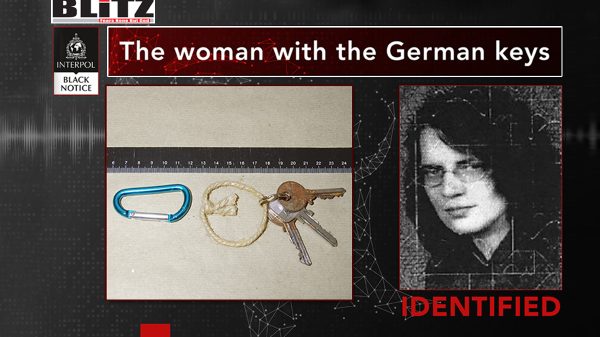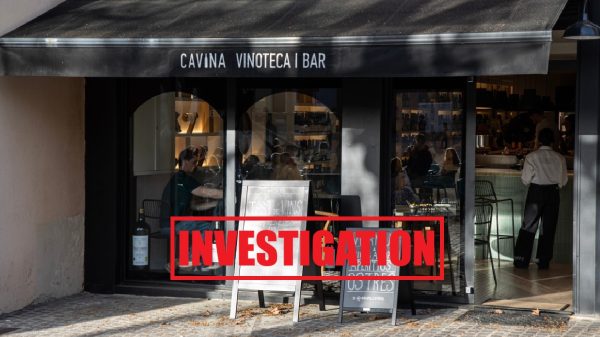Interpol identifies ‘Woman with the German keys’ after 21 years
- Update Time : Sunday, October 12, 2025

After more than two decades of uncertainty, the mystery of the “Woman with the German keys” has finally been solved. The woman whose lifeless body was discovered in the sand dunes near Wassenaar, a quiet Dutch coastal town, on July 4, 2004, has been identified as Eva Maria Pommer, a 35-year-old German national. The breakthrough, announced by the Dutch police on October 10, marks another success for Operation Identify Me, an Interpol-led initiative that aims to restore the names and identities of women who died under suspicious or unexplained circumstances across Europe.
Eva Maria Pommer’s case had confounded investigators for years. When her body was first discovered, there were no immediate signs of violence or struggle, nor any documents or personal belongings that could reveal who she was. All detectives had to go on were a few clues – her distinctive brown plaid leggings, a pair of red shiny patent shoes, and a key that appeared to be from the German city of Bottrop, located near the Dutch border.
That key, in particular, gave the unidentified woman her haunting moniker: “The Woman with the German keys.” Despite extensive investigative work by Dutch authorities – including isotopic analysis, fingerprint comparison, and multiple television appeals – her identity remained shrouded in mystery for nearly 21 years.
Forensic experts and detectives spent years chasing every possible lead. The dunes near Wassenaar were thoroughly combed for evidence. Her clothing was displayed on Dutch investigative programs, and isotope testing attempted to trace where she might have lived based on chemical signatures in her hair and teeth. But nothing led to a breakthrough.
In 2023, however, a new hope emerged when Interpol launched Operation Identify Me, a transnational campaign targeting cold cases involving unidentified female victims. The operation, carried out in collaboration with police from the Netherlands, Germany, Belgium, France, Italy, and Spain, released 22 “black notices” – alerts seeking information about unidentified bodies. It was the first time Interpol had made such notices publicly available, marking a significant shift toward engaging citizens worldwide in solving these enduring mysteries.
The initiative also enabled international sharing of fingerprint and DNA data, as well as renewed publicity through global media channels. As part of this effort, BBC News revisited the Wassenaar case in 2023, featuring interviews with Dutch investigators and forensic experts. One of them, Sandra Baasbank, recalled the unusual outfit Pommer was found wearing – inappropriate for a walk along the beach, suggesting she had not gone there voluntarily.
Following the renewed attention brought by the Identify Me campaign, the Dutch police received a crucial tip after a televised appeal in Germany. The program detailed the Wassenaar case and showed the clues that had been recovered, including the German key.
Shortly after the broadcast, someone came forward with information about a German woman named Eva Maria Pommer, who had been missing for approximately 20 years. The lead immediately drew the attention of investigators in both countries. Dutch detectives contacted their German counterparts in Bottrop, and together they began cross-referencing records of missing persons.
The investigation “accelerated” when DNA samples were obtained from Pommer’s relatives. Tests later confirmed with certainty that the remains found in the dunes belonged to her. For the first time since 2004, the “Woman with the German keys” had a name, a face, and a history.
Interpol’s campaign has now helped identify four women who had been missing or murdered for decades. The first was Rita Roberts, a 31-year-old British woman murdered in Belgium in 1992. Her family recognized her distinctive tattoo after seeing it in a BBC report connected to the Identify Me initiative.
The second breakthrough came in Spain, where a woman found dead in a poultry shed in 2018 was identified as Ainoha Izaga Ibieta Lima, a 33-year-old Paraguayan national. And just last month, Spanish authorities confirmed that another previously unidentified body discovered by the roadside in 2005 belonged to Liudmila Zavada, a 31-year-old Russian citizen.
Now, with Eva Maria Pommer’s case resolved, four families have finally received long-awaited answers. But the work is far from over – 43 women remain unidentified across six European nations. Many of them were believed to be murder victims, aged between 15 and 30, whose bodies were found as long as 40 years ago.
Interpol officials say the growing challenges of global migration, human trafficking, and cross-border disappearances have made identifying victims increasingly complex. People often vanish far from their home countries, leaving families in perpetual uncertainty and investigators without a starting point.
Valdecy Urquiza, Interpol’s Secretary General, emphasized the significance of international collaboration in these cases:
“This latest identification is more than just a milestone in our ongoing campaign – it’s a testament to what we can accomplish when nations stand together.”
For the Dutch authorities, the identification of Pommer represents both closure and motivation. Janny Knol, Commissioner of the Dutch National Police, expressed hope that this success will inspire continued cooperation and persistence in the remaining cases:
“In combination with the perseverance of Dutch and German detectives, yet another woman has been given a name. Our thoughts are with all the families who have finally received answers – and with those still waiting.”
The story of Eva Maria Pommer is not just a tale of forensic persistence but also a stark reminder of how easily people can slip through the cracks of modern society. For 21 years, she existed only as an anonymous entry in a police database, remembered only by a label – “The woman with the German keys.”
The fact that she was finally identified through a tip sparked by a television broadcast underscores the power of public engagement. It also highlights the profound impact of giving a name back to those who were lost. Every identification is, as investigators note, “a restoration of humanity.”
For Pommer’s family, the discovery brings long-delayed closure. For the investigators, it reaffirms the importance of never giving up – even when decades pass without answers. And for the broader international community, it illustrates how cooperation across borders, technology, and public awareness can bring justice to the forgotten.
While Operation Identify Me continues to make progress, the task ahead remains immense. Interpol’s database still contains dozens of unidentified women – many likely victims of human trafficking, exploitation, or violence. Each case represents not only a mystery but also a human life abruptly interrupted.
With Eva Maria Pommer’s identity now known, investigators hope to determine how she ended up in the dunes near Wassenaar and what circumstances led to her death. Though her case has moved from “unidentified” to “identified,” many questions remain unanswered.
Still, after 21 years of silence, her name has been restored – and that alone marks a triumph of determination, cooperation, and compassion.
















